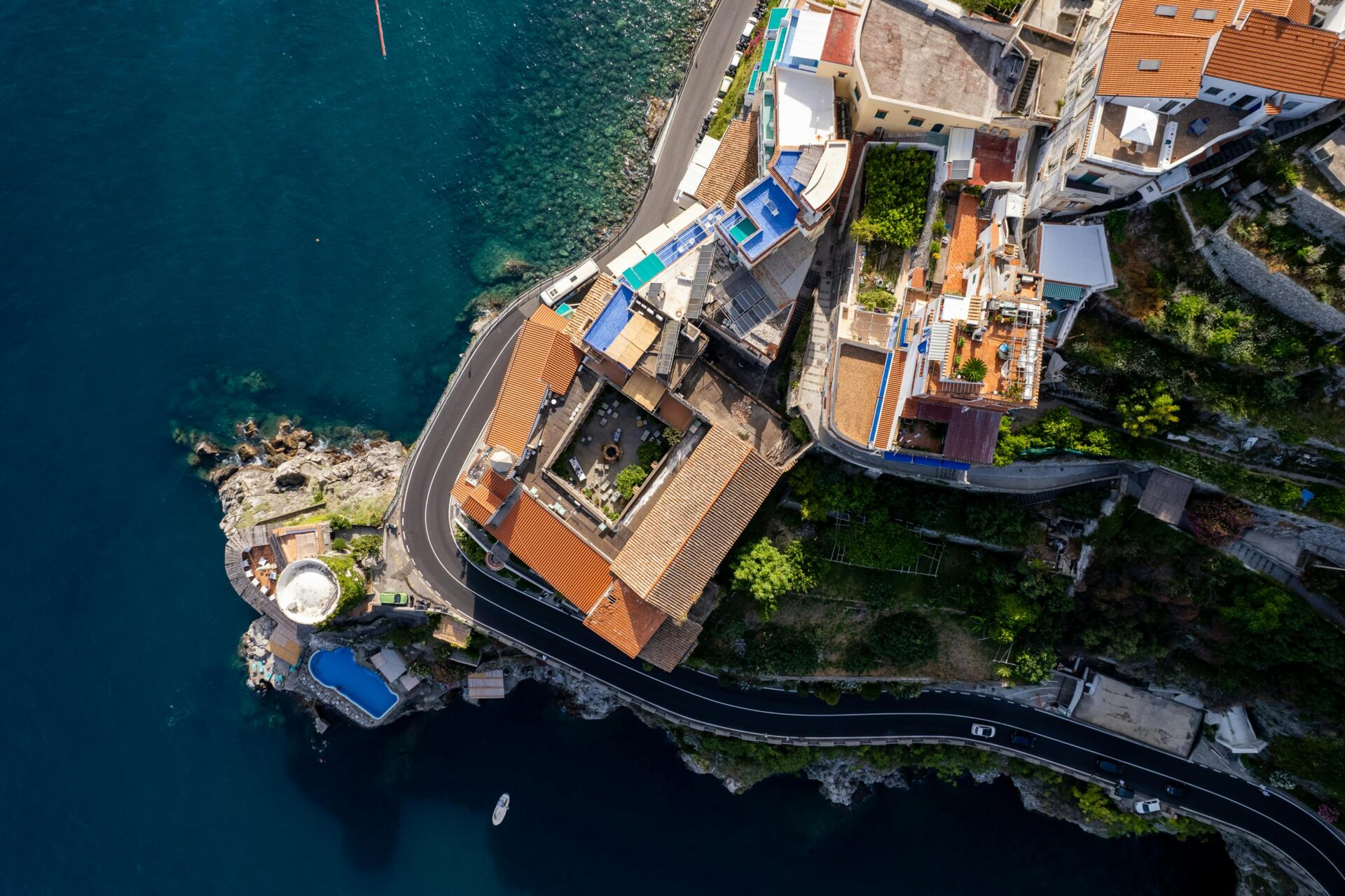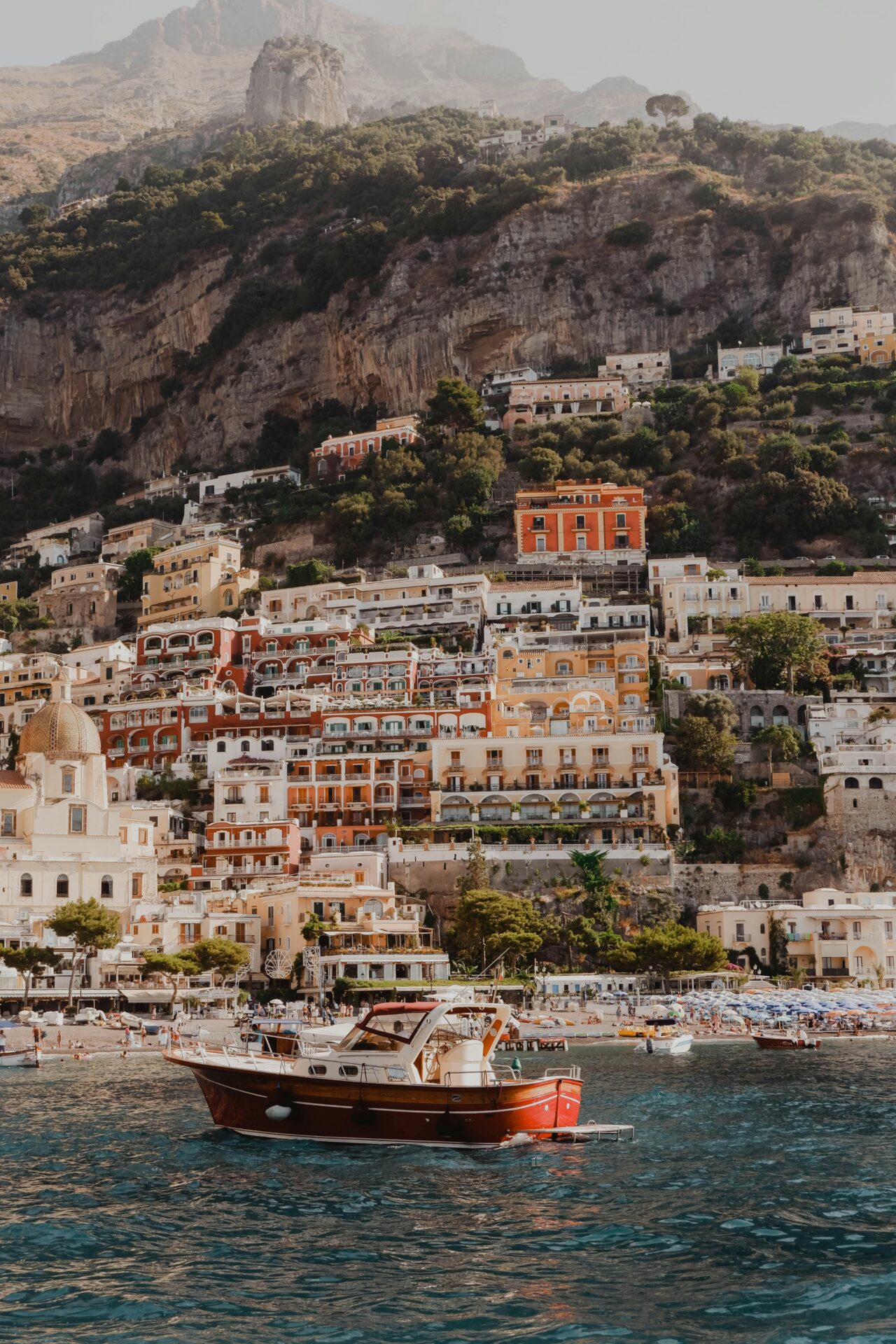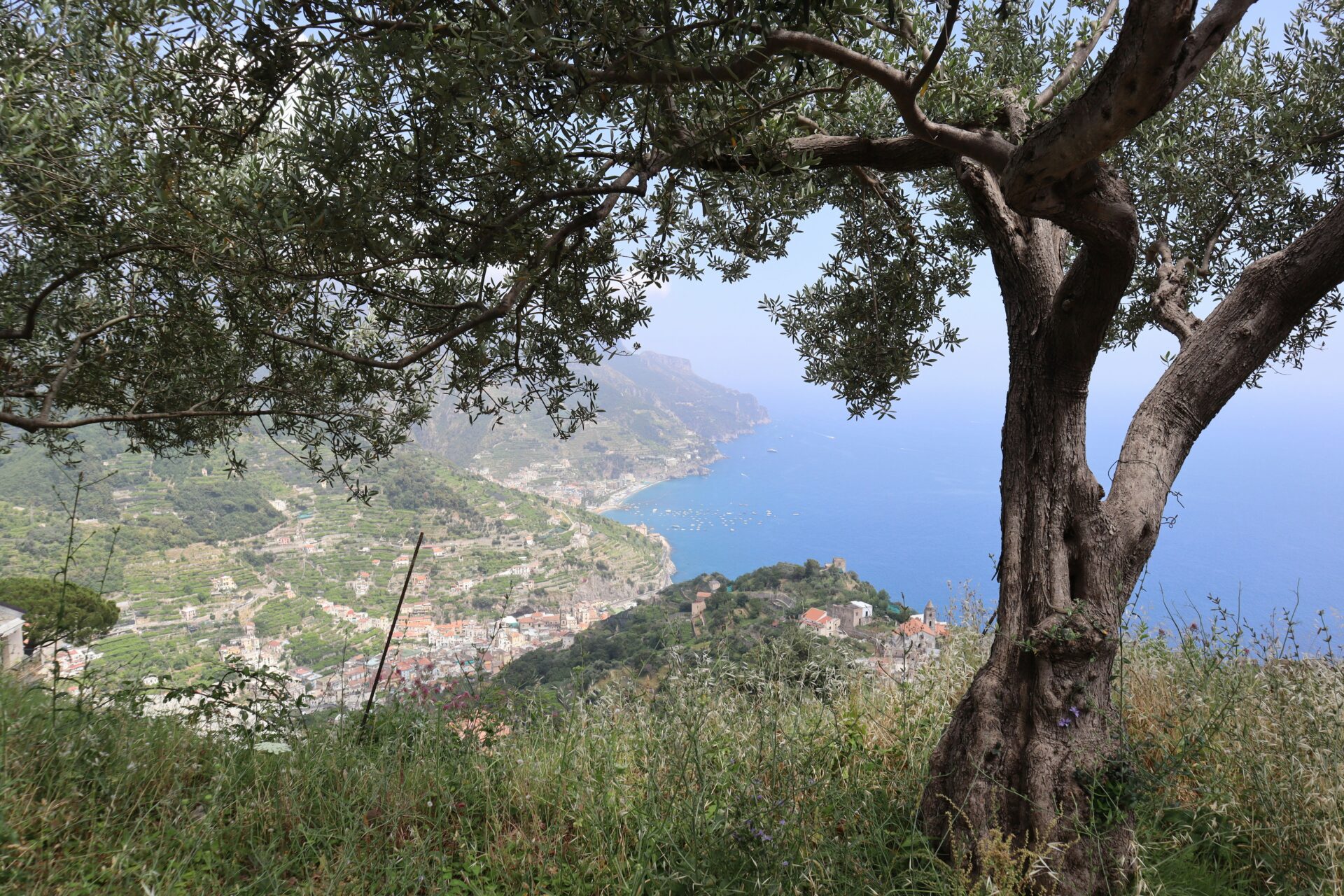Driving the Amalfi Coast in Italy is one of those bucket-list experiences that thrills and terrifies in equal measure. The coastal road hugs dramatic cliffs, and every twist reveals a jaw-dropping view of the Mediterranean.
People often call the Amalfi Drive one of the world’s most dangerous roads. But with some preparation and a little caution, you can absolutely handle it—and trust me, it’s unforgettable.
I still remember my first time behind the wheel there. My knuckles went white as local drivers zipped by, totally unfazed. The lanes are so narrow, with only concrete barriers or railings between you and a sheer drop. Parking? Nearly impossible. And in summer, the traffic can really test your patience.
Even with all that, I’d say driving yourself is the best way to see the coast. You get to stop wherever you want—maybe at a hidden viewpoint or a village the tour buses ignore. Sometimes I’d slow down just to soak it in; locals would breeze past, but that’s fine. If you take some basic safety steps and bring a bit of nerve, you’ll get to experience one of the world’s most spectacular drives.

Essential Safety Tips for Driving the Amalfi Coast
Driving the Amalfi Coast is stunning, but you have to stay alert. The roads demand respect, solid planning, and a few unique driving skills.
Understanding Road Conditions
The Amalfi Coast road (SS163 Amalfitana) has a reputation for danger. I’ve found that knowing what you’re up against makes it a lot less scary.
Most of the road squeezes into narrow lanes carved right into the cliffs. On my trips, I noticed some stretches don’t even have proper guardrails—or if they do, they’re lower than you’d expect.
Some edges look a little crumbly, so I always slow down in those spots.
Weather changes everything. Rain makes the road slippery, and in summer, the traffic just piles up. I always check the forecast before I leave.
Maintenance isn’t always consistent. After winter, spring brings roadwork and delays. I’ve had the smoothest drives in May and September—roads are in better shape, and there aren’t as many cars.

Navigating Winding Roads and Hairpin Turns
The Amalfi drive is packed with hairpin turns and blind corners. The first time I drove there, those tight bends really surprised me.
Hairpin Turn Tips:
- Honk your horn before blind corners
- Shift to the lowest gear on steep descents
- Yield to buses and trucks every time
- Stick to the right unless you’re passing
I try not to brake in the middle of a turn. Instead, I slow down before the curve and keep a steady pace through it.
All that twisting can make you queasy. I stop at viewpoints to get some air and take photos—helps settle the stomach too.
Road signs warn you about sharp turns or narrow bits. Pay attention. I ignored one once and nearly got flattened by a bus!

Dealing With Traffic and Narrow Streets
Traffic on the Amalfi Coast gets intense, especially in summer. I’ve spent hours stuck in July and August—what should have been an hour-long drive stretched into three.
During peak months (June-August), I hit the road early, usually before 8:00 AM. Traffic always seems to get worse around 10:00 AM when the tour buses start.
The tightest sections sometimes only fit one car at a time. Locals know the unspoken rules, but I always yield to uphill traffic if I’m not sure.
Parking Tips:
- Book hotels with parking included
- Use paid lots outside town centers
- Skip spots with yellow lines (those are for residents)
- Expect parking to cost €20-30 per day
Driving through towns like Positano or Amalfi, I go slow and watch for pedestrians—they walk right in the street. Some lanes barely fit a car, so meeting oncoming traffic can be nerve-wracking.

Planning Your Route and Timing
Planning your Amalfi Coast drive takes some thought—when to go, which towns to visit, and how to organize your days. The coast stretches about 50 km, and driving straight through would take two hours, but you’ll want way more time to enjoy it.
Choosing the Best Time to Drive
Timing really matters here. The best months are May, June, September, and early October—good weather, fewer crowds. Avoid August if you can; that’s when Italian vacationers flood the coast.
Morning drives (before 9 AM) or late afternoons mean less traffic and better light for photos. Weekdays are much quieter than weekends during peak season.
If you can, stay in one town for 3-4 days and do day trips. That way, you can change your plans based on weather or traffic.

Popular Towns on the Amalfi Coast Route
When I planned my trip, I made sure not to miss these must-see towns:
Sorrento – The starting point, famous for its lemon groves and views.
Positano – Those famous colorful houses stacked on the cliffs.
Amalfi – The main town, with a gorgeous cathedral and deep maritime roots.
Ravello – High up, with gardens and sweeping vistas.
Salerno – Less touristy, more authentic Italian vibes.
I usually pick just 2-3 towns to explore each day. Positano and Amalfi get packed, so I arrive before 10 AM to snag parking and beat the crowds.

Mapping Out Day Trips and Excursions
The trick to enjoying the Amalfi Coast is balancing drive time with time spent in each place. Here are some day trip combos that worked for me:
- Day 1: Sorrento → Positano (30 min drive), lunch and beach break
- Day 2: Positano → Amalfi (25 min drive), see the cathedral and take a boat
- Day 3: Amalfi → Ravello (15 min drive), visit Villa Rufolo and Villa Cimbrone
Sometimes, I skip driving and take a boat instead. One day, I caught a ferry from Positano to Amalfi—no traffic, just amazing views.
For something special, I booked a food tour in Sorrento. We tasted limoncello and local dishes, and someone else handled the driving. Honestly, it was a great break from the car and made the trip even better.

Parking and Transportation Alternatives
Driving the coast is beautiful, but parking and traffic can really stress you out. Luckily, there are other ways to get around, and sometimes they’re even more fun.
Finding Safe Parking in Amalfi Coast Towns
Parking is tough and expensive here. Most towns have small garages that charge €5-8 per hour. In Positano, I try to get there before 9 AM for a spot in the main lot.
Hotels often offer parking, but it’ll cost you €25-30 a day. I always call ahead to check if they have space. Sometimes, hotels provide valet service and park your car outside the busy center.
When I pop into town to eat or shop, I look for blue lines (pay to park) or white lines (free, but usually with a time limit). Parking apps like EasyPark save me from fumbling for coins at the machines.

Using Ferries and Public Transport
Ferries are hands-down my favorite way to hop between Amalfi Coast towns. You get the best views from the water, and you don’t have to worry about those narrow roads.
Ferries run April through October, connecting Sorrento, Positano, Amalfi, and Salerno. A ride costs about €8-12 and takes 20-30 minutes.
The SITA buses are another solid choice. For €8, I grab a 24-hour ticket and ride as much as I want. Buses run often in summer, but they do get crowded.
I usually mix things up—take a ferry one way, a bus the other. It keeps things interesting and lets me see the coast from different angles.

When to Consider Tours Instead of Driving
After several trips, I’m convinced guided tours are a lifesaver for some travelers. You don’t have to stress about directions or parking at all.
Small-group tours (8-12 people) are the sweet spot. I’ve joined full-day tours from Naples and Sorrento for €75-100, hitting Positano, Amalfi, and Ravello.
Boat tours are something special. I once did a 6-hour cruise from Positano (€85) with swimming stops and photo ops you just can’t get from the road.
If you love food, culinary tours are the way to go. My favorite? A limoncello workshop and lunch, with transportation included. All I had to do was enjoy the flavors and scenery.

Exploring Amalfi Coast Towns Safely
The towns along the coast are charming and full of character, but getting around takes a little care. Each place has its own vibe, from Positano’s cliffside houses to Amalfi’s historic cathedral.
Top Safety Tips for Visiting Towns
Walking is the best way to explore most towns here. The streets are narrow, and parking is a hassle—especially in Positano and Amalfi.
During summer, I visit early (before 9am) or after 4pm to dodge the heat and crowds.
Wear good shoes with grip! These towns are built on steep hills, and the stone steps get slick when it rains. My favorite walking shoes have saved me in Ravello more than once.
Keep your valuables close, especially in busy spots like:
- Main piazzas
- Bus stops
- Popular viewpoints
Don’t forget to stay hydrated and wear sunscreen. I always bring a refillable water bottle—most towns have fountains with drinkable water.

Staying Overnight: Hotels and Local Experiences
Spending a night or two in an Amalfi Coast town completely changes the experience. I’m a big fan of Minori and Maiori—they’re more relaxed and less pricey than Positano.
When booking, I always check if the hotel has parking (it’s worth paying extra). Also, ask if there are a lot of stairs—some places require quite a climb.
Staying just outside the center often means better deals.
Evenings are magical after the crowds leave. I love strolling through Vietri sul Mare to admire the ceramics or grabbing a sunset aperitivo in Cetara.
For real local flavor, I seek out family-run restaurants away from the main squares. The seafood in Cetara and pastries in Minori are always a highlight for me.

Active Adventures: Hiking and Scenic Walks
The Amalfi Coast isn’t just about driving. Some of the best views come from exploring on foot. Walking these old paths gives you a whole new perspective.
Hiking the Path of the Gods
I’ve hiked all over, but the Sentiero degli Dei (Path of the Gods) is something else. The trail runs from Bomerano to Nocelle, with panoramic views of the sea and villages below. It’s easy to see why people say it’s divine—you’ll feel like you’re floating above the coast, with Capri in the distance.
The trail is about 7 km (4.3 miles) one way and takes around 3-4 hours. I always start early to beat the crowds and the heat. Good hiking shoes are a must; some parts are rocky and uneven.
Getting there: Take a bus to Bomerano, start from there, and hike down to Nocelle/Positano. Going downhill is easier and the views are unbeatable.

Safety Precautions for Outdoor Activities
When I hike the Amalfi trails, safety comes first. I always pack:
- At least 1.5 liters of water per person
- Sunscreen, a hat, and sunglasses
- Light layers (the weather can change fast)
- Sturdy hiking shoes
- Snacks and a small first aid kit
Summer gets brutally hot, so I try to hike in spring (April-May) or fall (September-October). If it’s summer, I set out very early.
Cell service is spotty on the trails. I let someone know my plans before heading out. Some parts have steep drop-offs, so I stay on the marked paths and keep an eye on kids.

